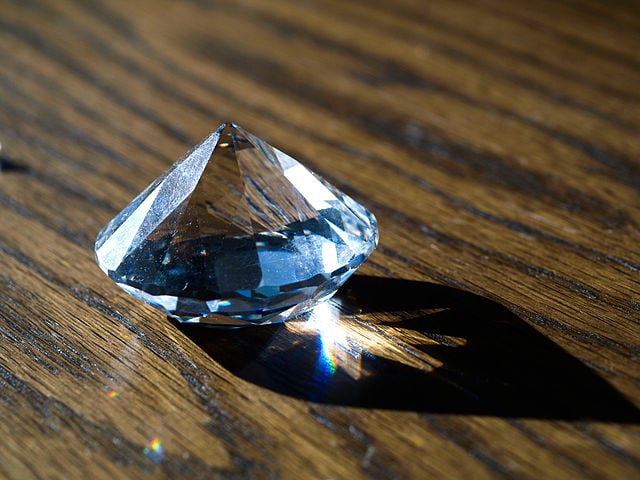
In the realm of gemstones, diamonds have long been heralded as the pinnacle of luxury and elegance. For decades, the notion that diamonds are exceedingly rare has been ingrained in the public consciousness. However, this perception is largely a myth. This article delves into the reasons why mined diamonds are not rare as rare as commonly believed, debunking the misconceptions that have driven their market value.
Historical Context and Marketing Myths
The perceived rarity of diamonds can be traced back to clever marketing campaigns, most notably by De Beers. In the late 19th and early 20th centuries, De Beers consolidated diamond mines and effectively monopolized the diamond market. Through aggressive marketing strategies, including the iconic “A diamond is forever” campaign, they created an artificial scarcity. By controlling the supply and fostering a culture where diamonds symbolized eternal love, they cemented the idea of rarity in the consumer psyche.
Monopoly and Supply Control
De Beers’ monopoly allowed them to regulate the flow of diamonds into the market meticulously. They stockpiled vast quantities of diamonds and released them strategically to maintain high prices. This practice gave the illusion of scarcity, even though ample diamonds were available. The company’s influence was so pervasive that it shaped global diamond trading practices and perceptions for generations.
Geological Abundance
From a geological standpoint, diamonds are not exceedingly rare. They are found in significant quantities in several regions around the world, particularly in areas with volcanic activity, where kimberlite and lamproite pipes are present. These geological formations are rich in diamonds, contradicting the notion of scarcity.
Major Diamond-Producing Regions
Countries such as Russia, Botswana, Canada, and Australia have extensive diamond mines. For instance, the Mir mine in Russia and the Jwaneng mine in Botswana are among the largest in the world, producing millions of carats of diamonds annually. These mines alone produce enough diamonds to meet global demand multiple times over.
Technological Advancements in Mining
Modern mining technologies have further increased the yield of diamond extraction. Advanced geological surveying techniques, coupled with sophisticated mining equipment, have made it possible to access diamond deposits that were previously unreachable. As a result, the volume of diamonds extracted has surged, further dispelling the myth of rarity.
Economic Factors and Market Dynamics
The diamond market is influenced by a complex interplay of supply, demand, and perceived value. While diamonds are geologically abundant, their market value is sustained by controlled supply and strong consumer demand, driven by historical and cultural factors.
Controlled Supply Chains
Even though diamonds are abundant, the supply chain is carefully managed to prevent market saturation. Companies like De Beers continue to play a pivotal role in this process, although the market has become more competitive with the emergence of new players. By controlling the release of diamonds, these companies maintain higher prices and the illusion of rarity.
Consumer Demand and Perceived Value
Consumer demand for diamonds remains robust, fueled by cultural significance and the association of diamonds with luxury and status. The diamond engagement ring tradition, which gained popularity in the mid-20th century, continues to drive substantial demand. This cultural norm, combined with marketing efforts, sustains the high market value of man made diamonds.
Ethical and Environmental Considerations
In recent years, ethical and environmental concerns have come to the forefront of the diamond industry. These issues have highlighted the abundant availability of diamonds and prompted a reevaluation of their rarity and value.
Conflict Diamonds
The term “conflict diamonds” or “blood diamonds” refers to diamonds mined in war zones and sold to finance armed conflict. Awareness of this issue has grown, leading to initiatives like the Kimberley Process, which aims to certify the origin of diamonds and ensure they are conflict-free. This scrutiny has revealed the vast networks of diamond mining and trade, underscoring their abundance.
Environmental Impact
Diamond mining has significant environmental impacts, including land degradation, water pollution, and loss of biodiversity. The scale of these operations highlights the large quantities of diamonds being extracted, contradicting the idea of rarity. Sustainable and ethical mining practices are becoming more important, prompting consumers to consider the true cost of diamond extraction.
Synthetic Diamonds: A Modern Alternative
The advent of synthetic diamonds has further challenged the notion of diamond rarity. These lab-grown diamonds are chemically and physically identical to natural diamonds, yet they are produced in controlled environments.
Production Techniques
Synthetic diamonds are created using two primary methods: High Pressure High Temperature (HPHT) and Chemical Vapor Deposition (CVD). These techniques replicate the natural conditions under which diamonds form, allowing for the production of high-quality diamonds in a matter of weeks.
Market Impact
The introduction of synthetic diamonds has disrupted the traditional diamond market. As they become more popular and accepted, synthetic diamonds offer a more ethical and environmentally friendly alternative to mined diamonds. Their availability in large quantities and lower production costs challenge the historical perception of diamond rarity.
Conclusion: Redefining Diamond Rarity
In conclusion, the notion that mined diamonds are rare is a carefully cultivated myth. Geological abundance, technological advancements in mining, and the rise of synthetic diamonds all point to a reality where diamonds are far from scarce. Understanding the historical context and market dynamics that have perpetuated this myth allows consumers to make more informed decisions. As ethical and environmental considerations become increasingly important, the diamond industry is likely to continue evolving, reshaping our understanding of what makes a diamond truly valuable.
